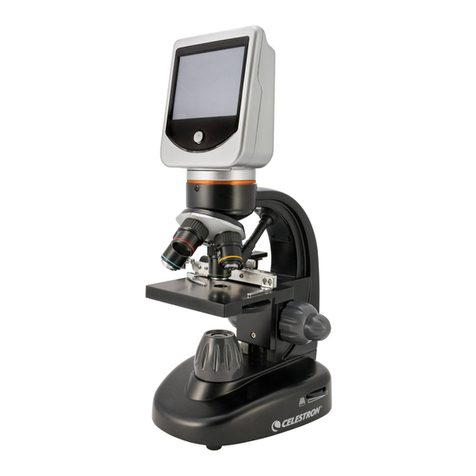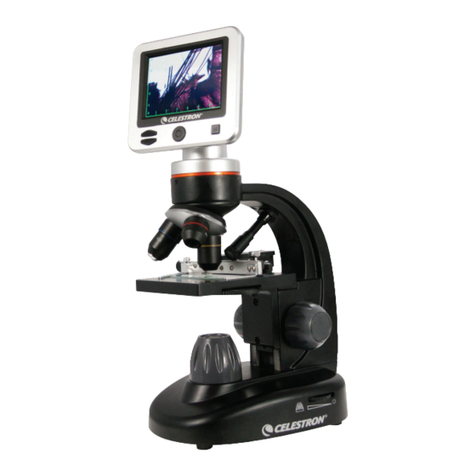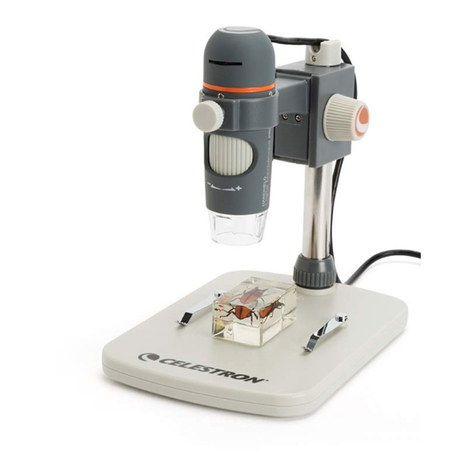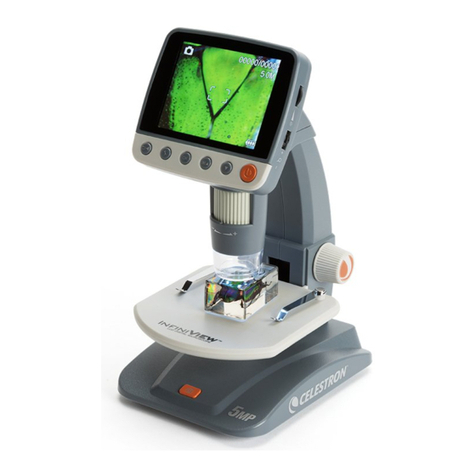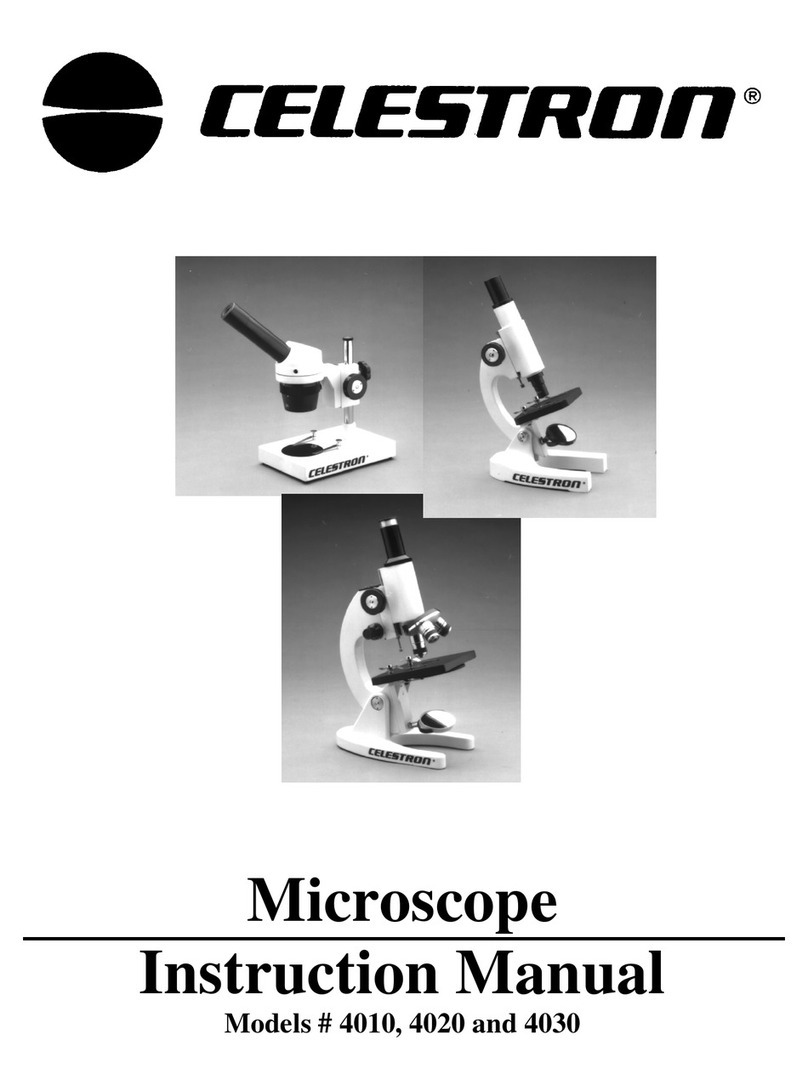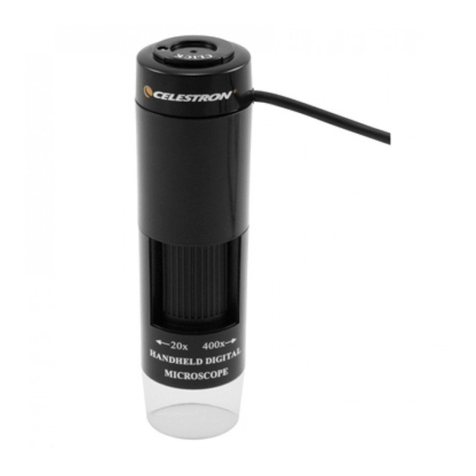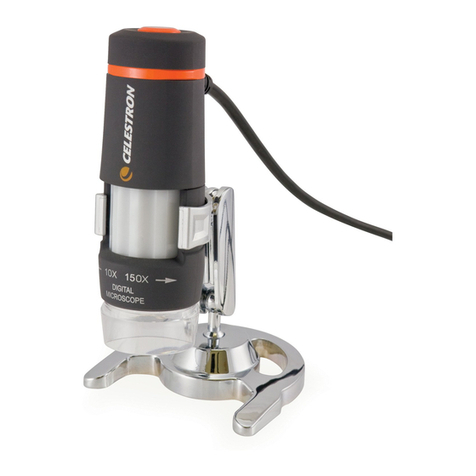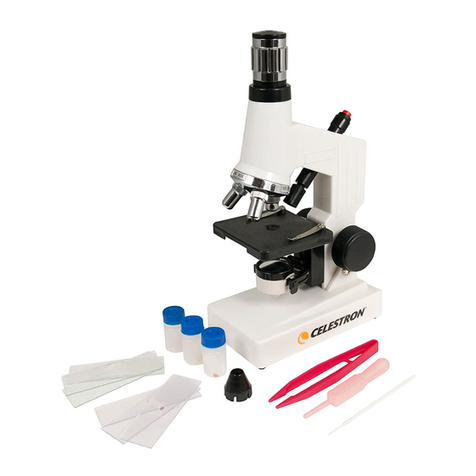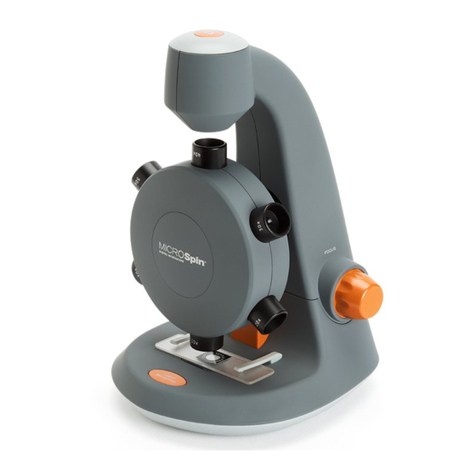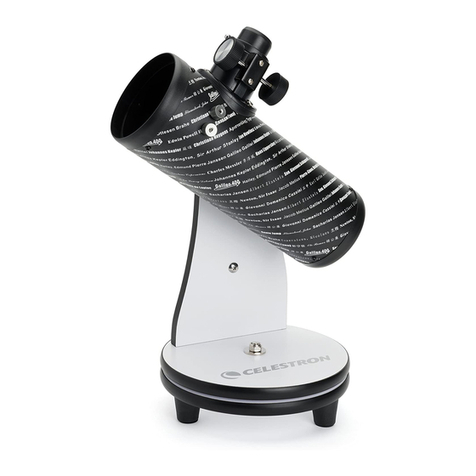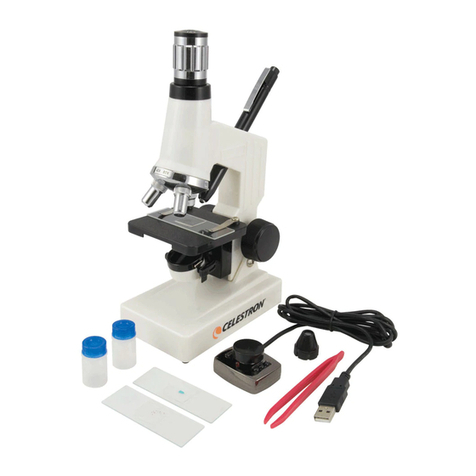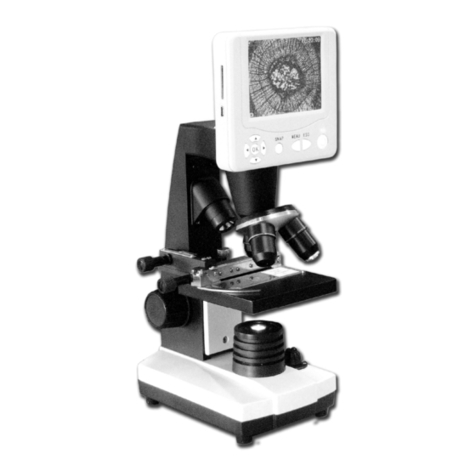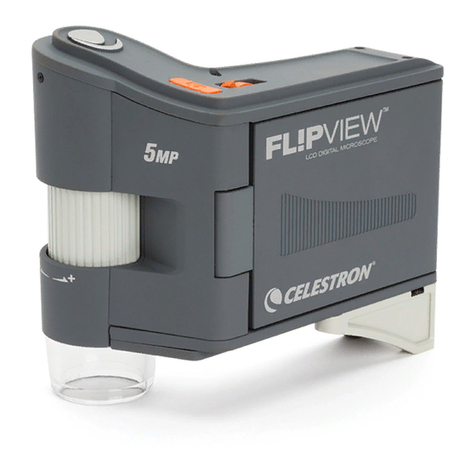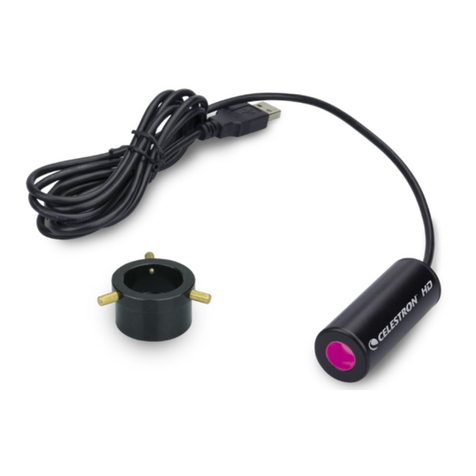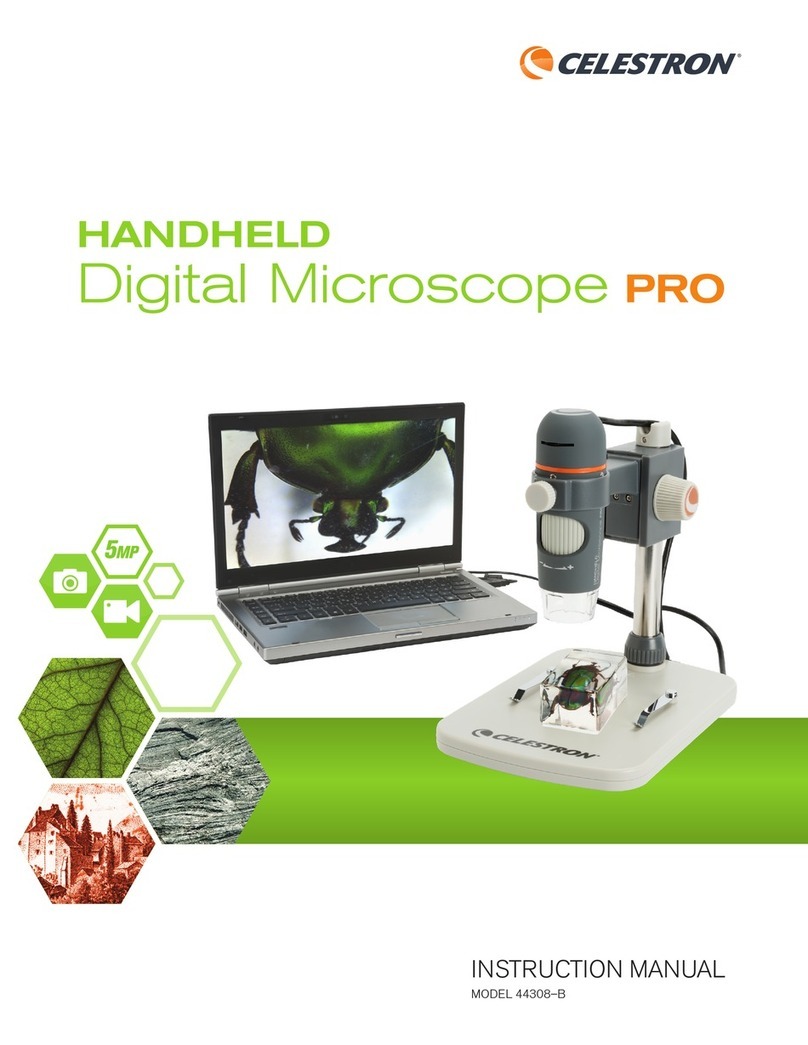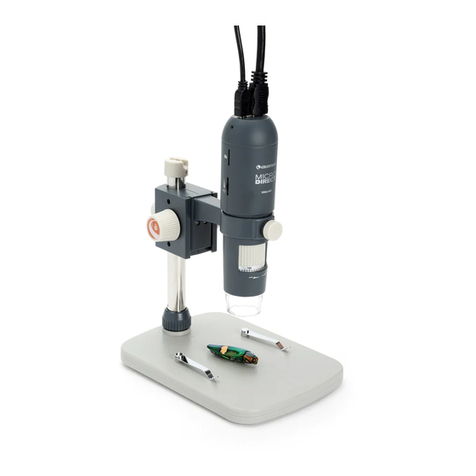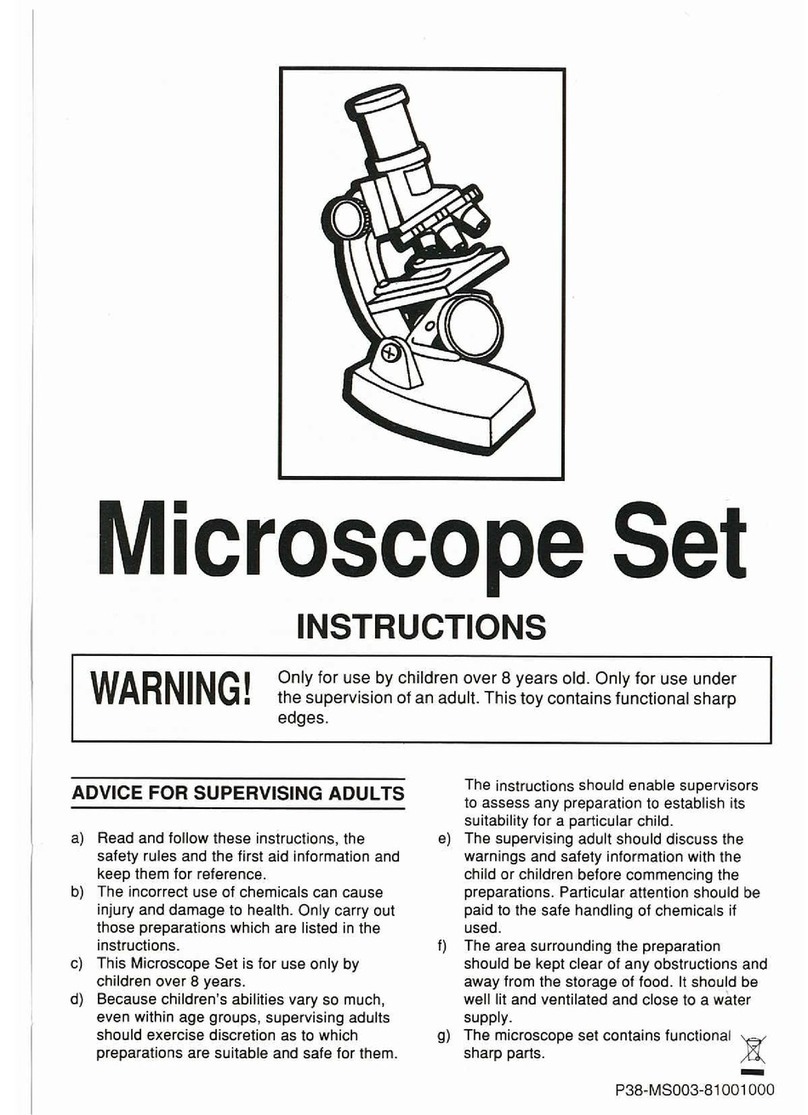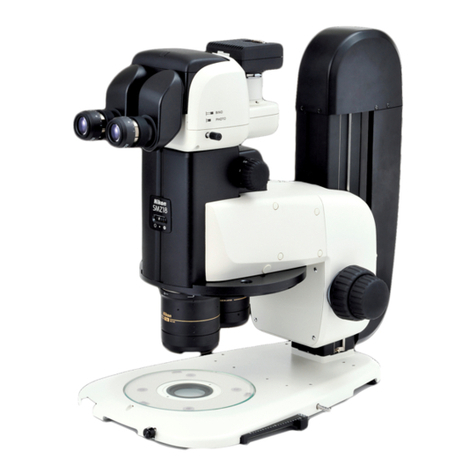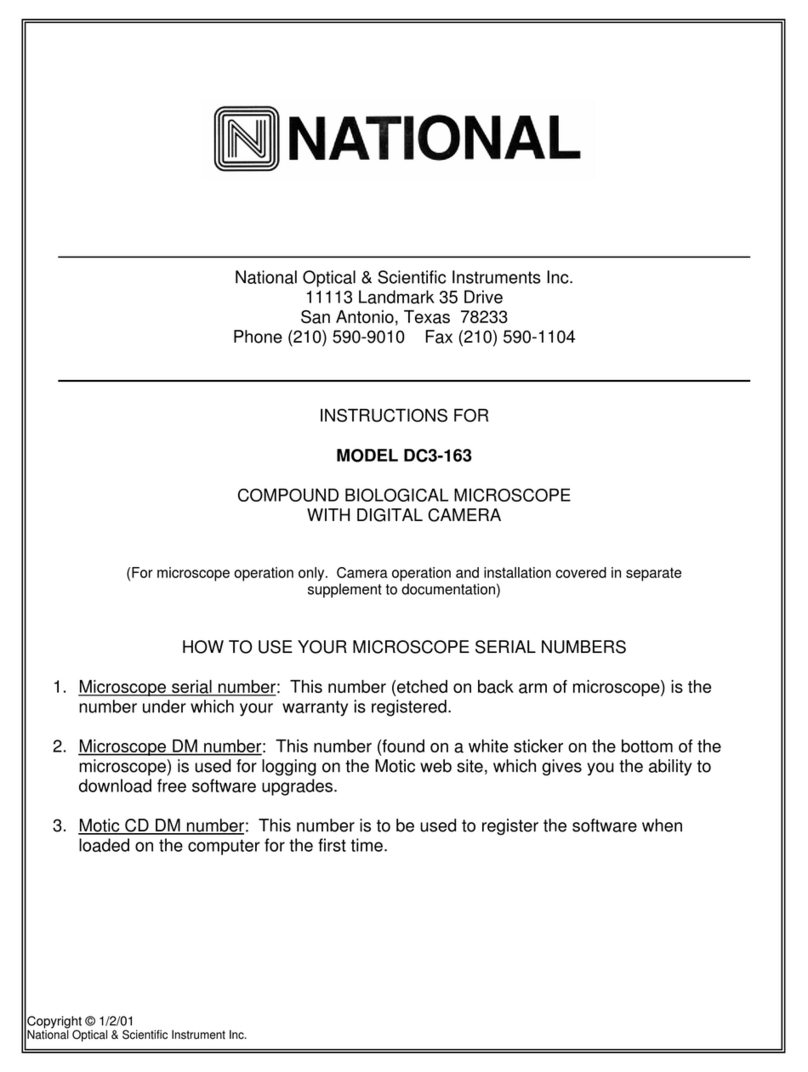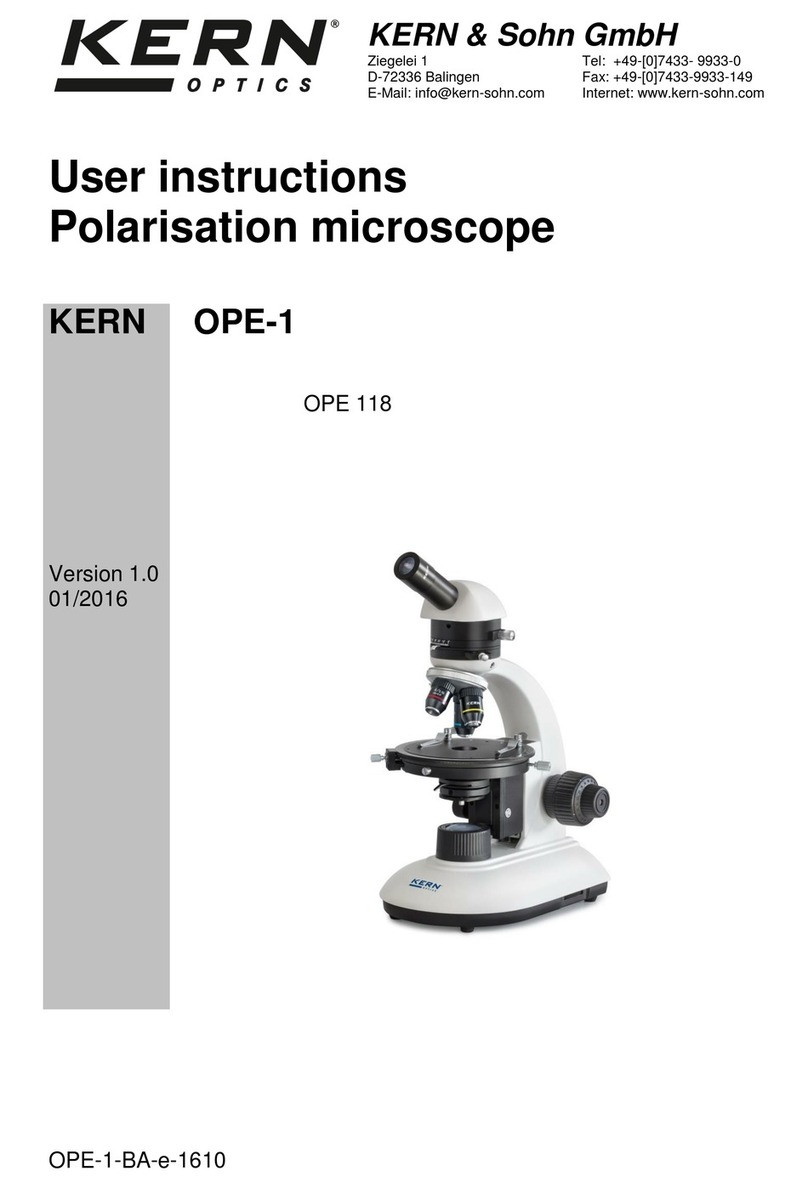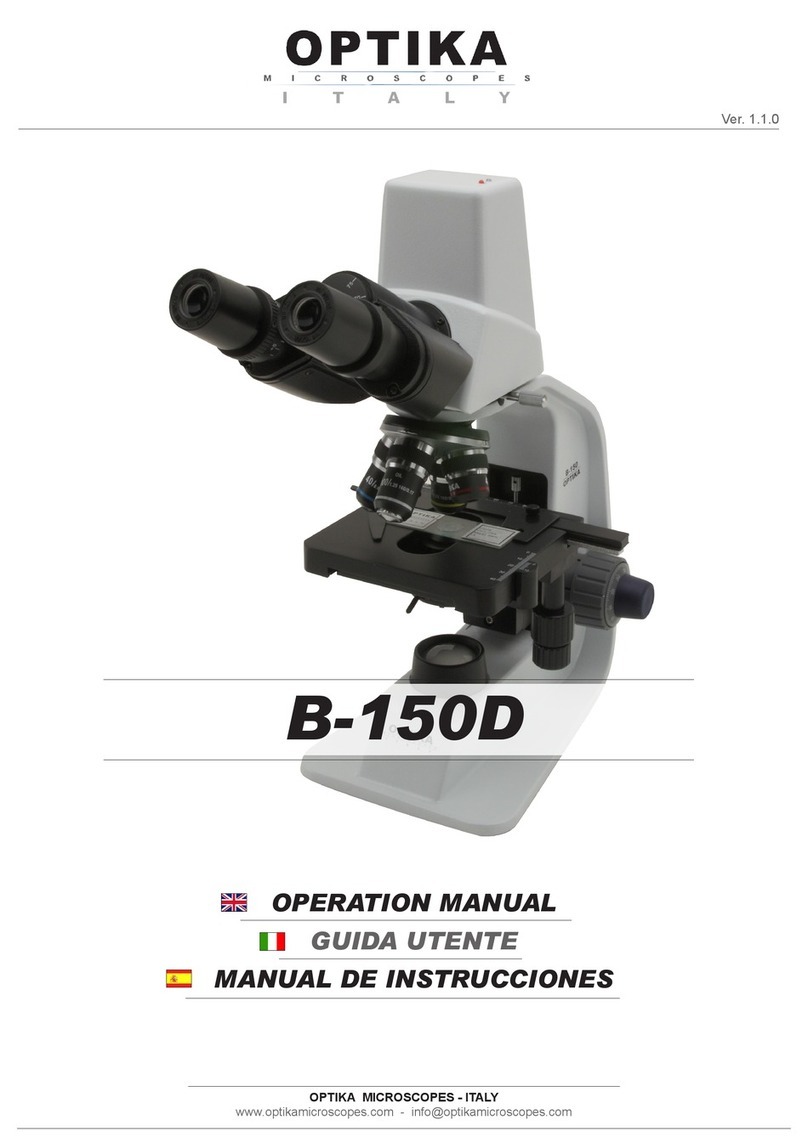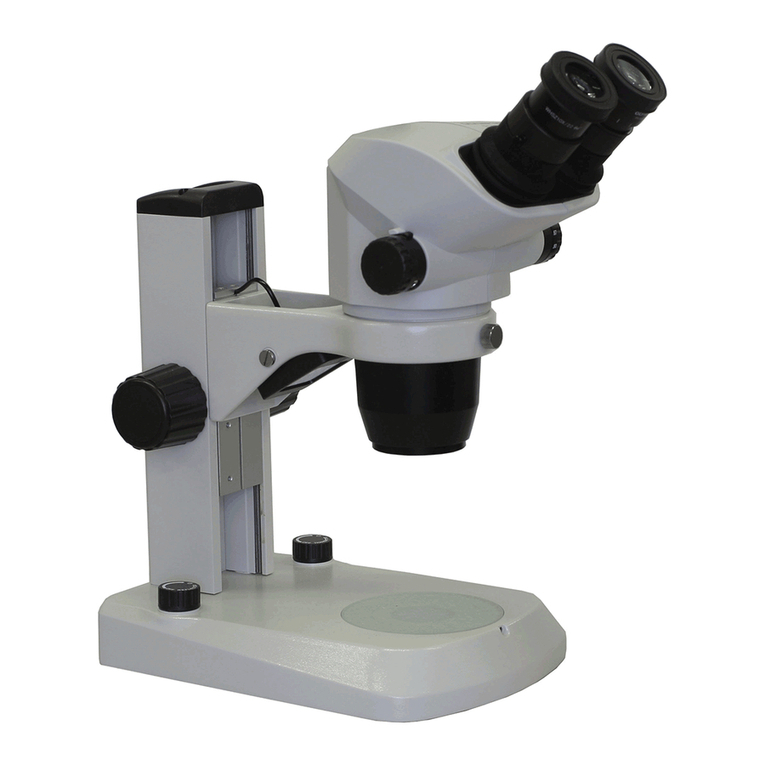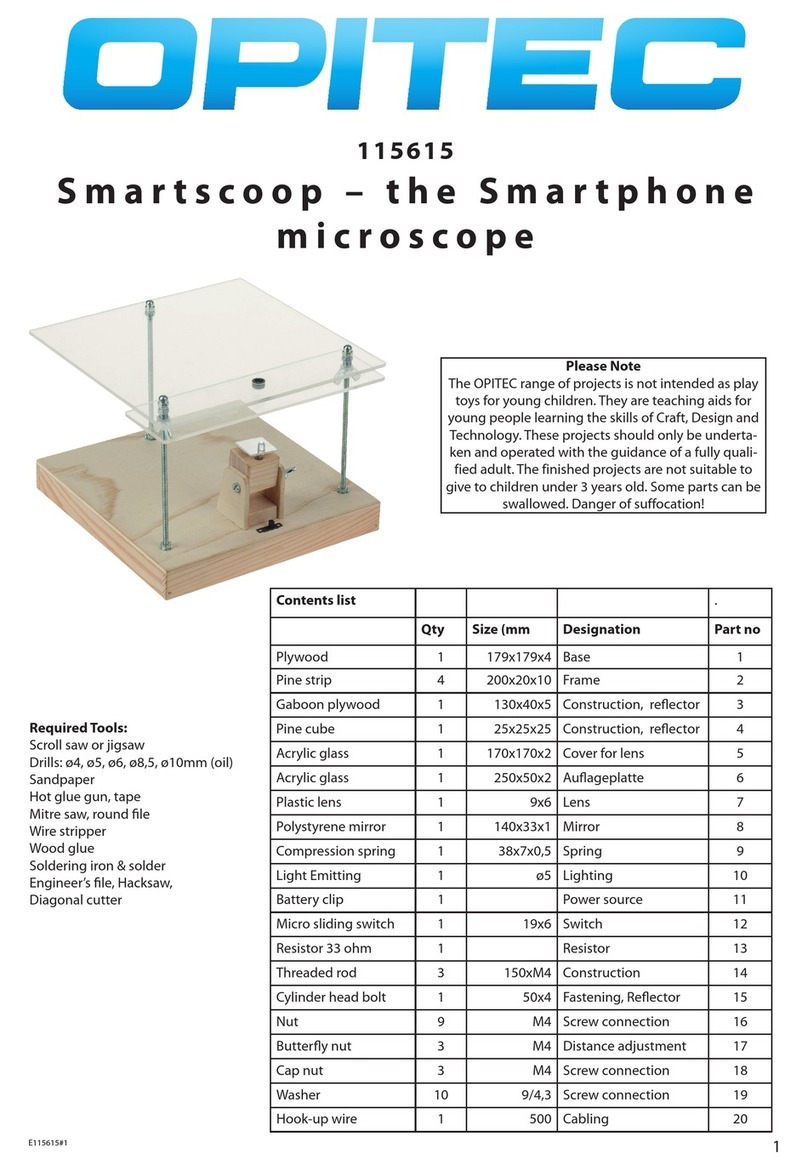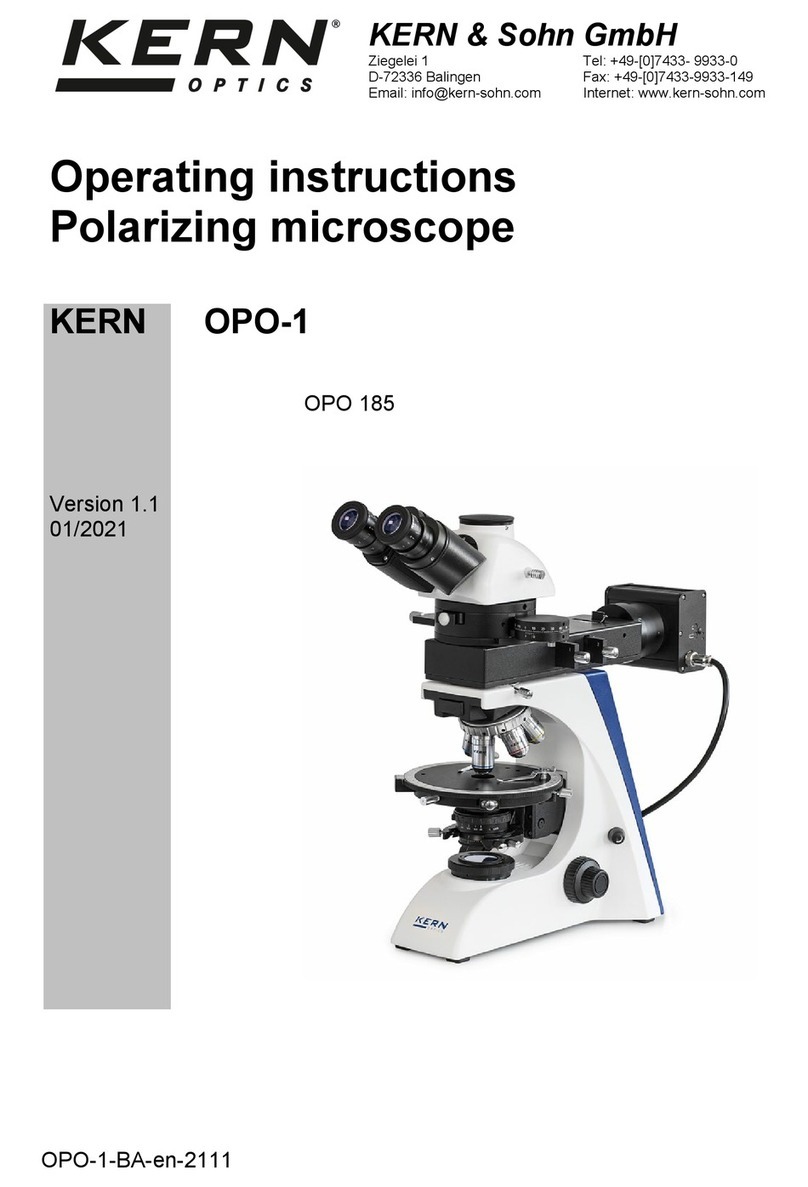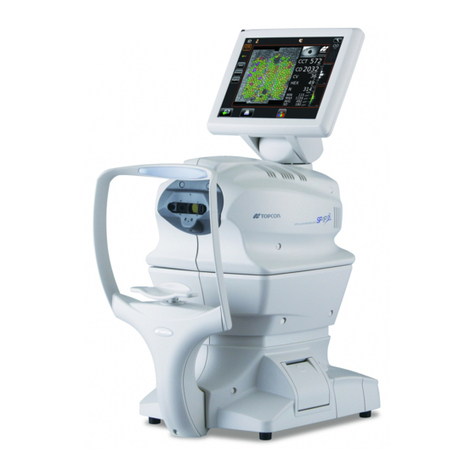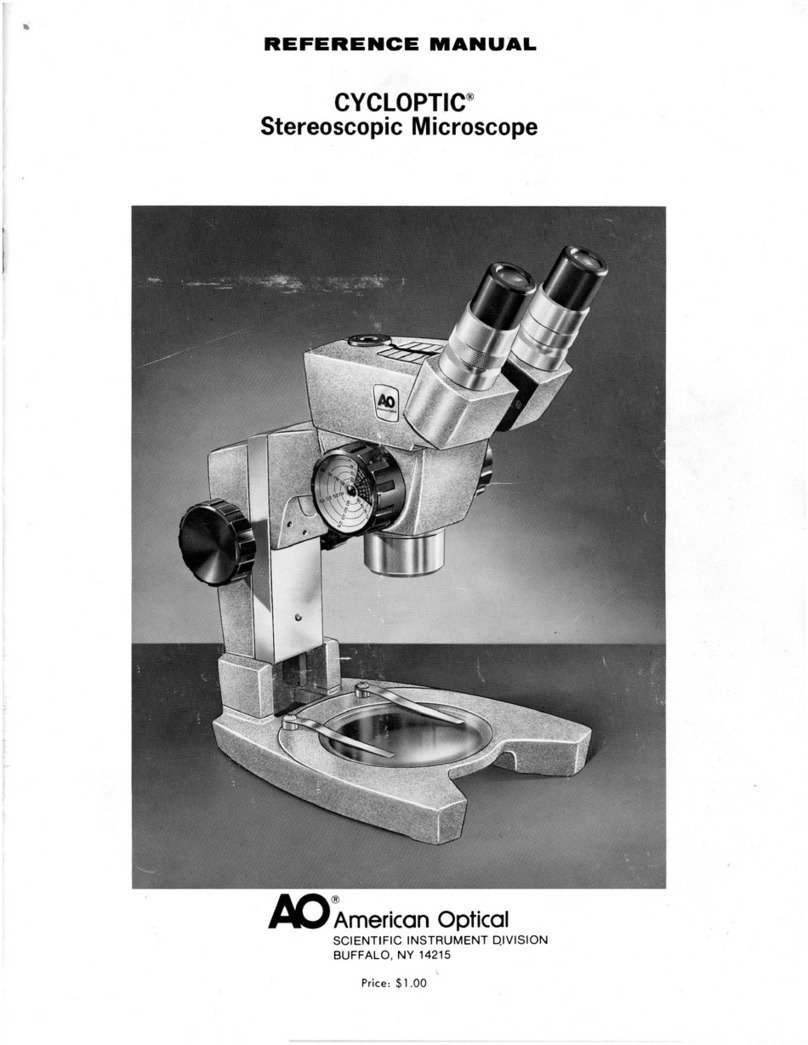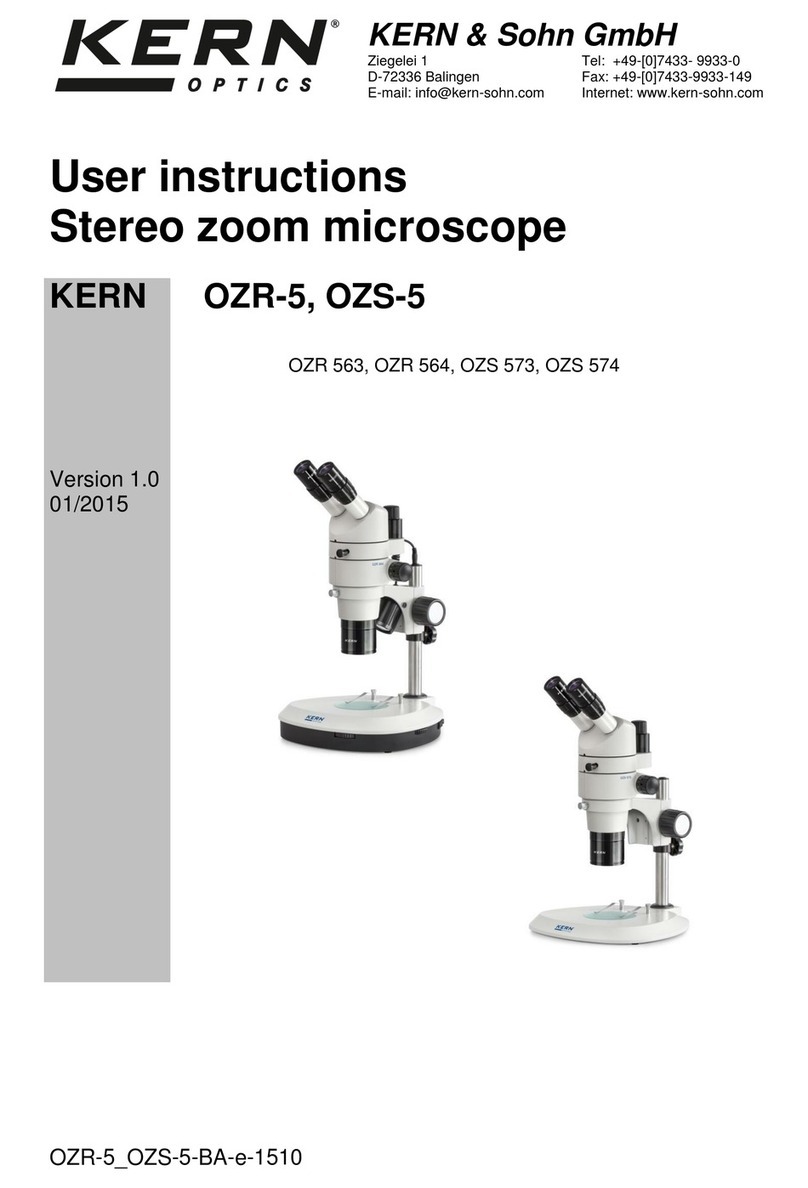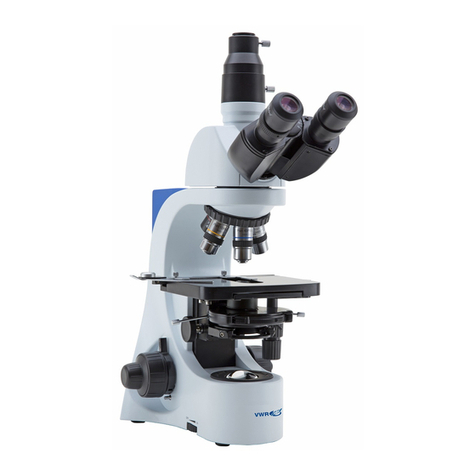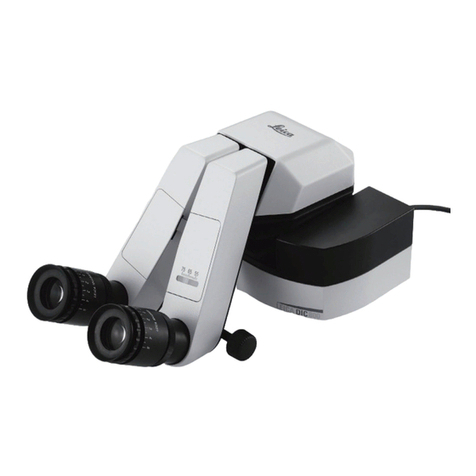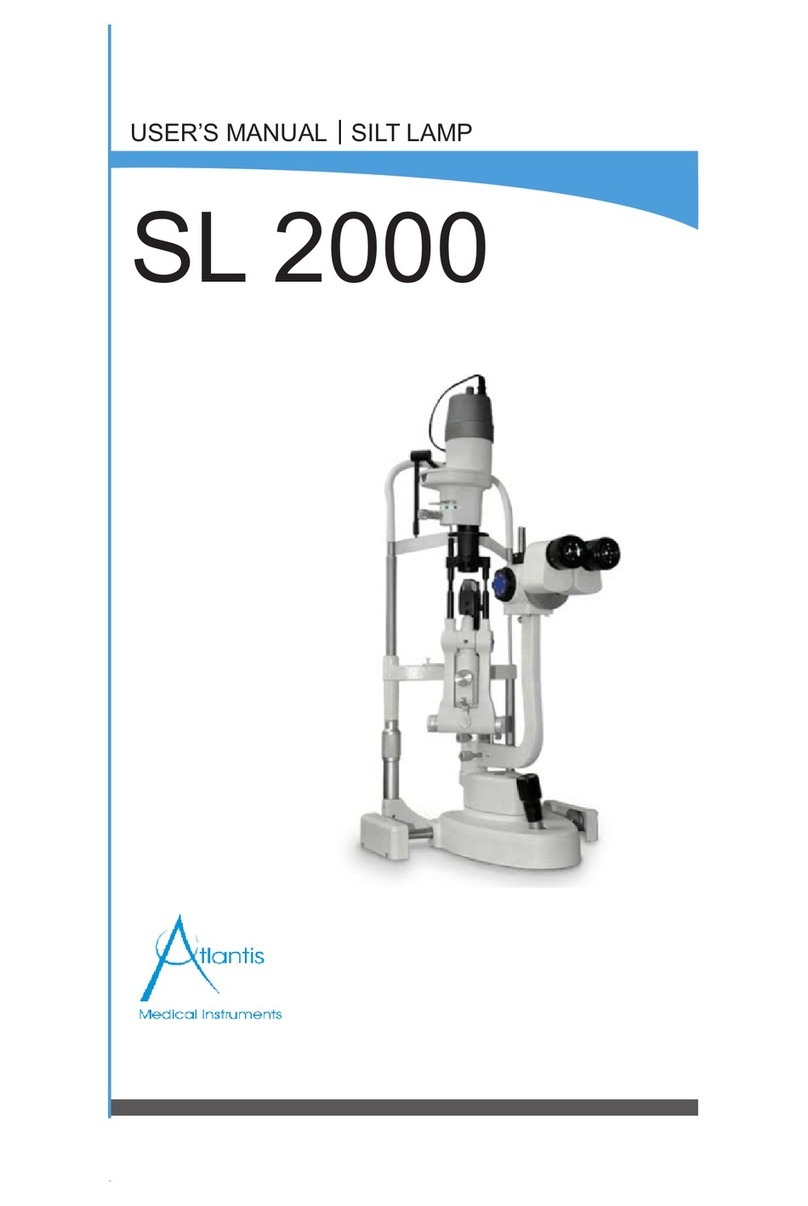
4
Microscope Operation
Before looking at specimens you must turn the LCD on, turn on the proper illumination, and understand how to use the mechanical stage and then
you are ready to begin viewing.
LCD Module
This digital microscope is different than traditional microscopes --- instead of using eyepieces to look at a specimen in a traditional microscope,
the LCD monitor replaces the eyepieces so you can look at the specimen on the screen by yourself or share the views with others. To begin to
view specimens with your microscope, you will have to turn the LCD monitor on by pushing and holding the Power Button (see Figure 1) until
the LED comes on below the on/off button and you see “Celestron Digital Microscope” on the screen. That is basically all you need to do to use
the LCD screen for viewing specimens. The touch screen functions on the LCD Module are mainly used for taking images (snapshots and video)
and performing other functions and will be discussed later in this manual.
Illumination
To get the sharpest and best views, the proper illumination (lighting) must be chosen:
1. To turn the illuminator(s) on, see Figures 5 & 6 and turn the switches as shown for each.
2. The top illuminator (Figure 1) was designed to be used at low power (4x objective) as higher power objective
lenses (10x, 20x & 40x) will block some of the light. If you need to use high power to observe solid objects, use
a bright secondary light (desk lamp, etc.) for directed illumination.
3. The bottom illuminator (Figure 1) is used mainly for specimen slides where the light shines up through the
hole in the stage through the slide.
4. Having both illuminators on at the same time can provide enough light for thick and irregular specimens.
Figure 5
Adjusting the Lighting
Specimens of different size, thickness, and color variations will require different levels of illumination. Adjust the
brightness by turning the switches shown in Figure 5 & 6.
When viewing a specimen that is not transparent or dark in color, you may need to increase the amount of light to
resolve certain features or details. This is best done by simply increasing the brightness of the illuminator by rotating
the brightness control dial all the way to its highest setting.
Optimum lighting will be found by experimenting with adjustments as each specimen may require slightly different
illumination as well as the same specimens viewed under different powers.
Figure 6
Viewing a Specimen
Your instrument is provided with a mechanical stage with a stage holder clamp and directional knobs –see Figure 7 below.
1. Use the clamp lever to open the clamping arm of the stage holder clamp.
2. Place a specimen slide (1” x 3”/25.4mm x 76.2mm size) inside the holder and gently close the clamping arm against the slide.
3. Use the stage movement knobs to position the specimen over the opening in the stage. The rear stage movement knob moves the X axis
(forward and backward) whereas the front stage movement knob moves the Y axis (side to side).
Note: A vernier scale on both axes allows the exact marking and replication of an object in the field of view that the user may want to come
back to.
4. Use the objective nosepiece (Figure 1) to rotate the objective lenses (Figure 1) until the 4x objective lens is
directly over the specimen. Always start with the lowest power objective (4x with this microscope) which gives
you 40 power and work your way up to higher powers. At 40 power you will have the widest field of view and the
brightest image.
5. Look at the LCD screen while turning the focus knob (Figures 1 & 7) until the specimen comes into view.
You may need to adjust the stage movement knobs (Figure 7) slightly to center the specimen in the field of view.
The larger focus knob is the coarse focus and the smaller knob is for fine (exact) focusing.
Figure 7
6. With the 4x objective lens, you can also vary the power anywhere from 40x to 160x by using the digital zoom.
7. For higher powers, you will need to rotate the objective nosepiece to the 10x or 20x and to the 40x objective for the maximum power. You will
have to refocus when changing the power of the objective lenses. While using any of these objective lenses you also can increase power by
using the digital zoom. Note that using a higher power objective lens will yield sharper images versus a lower power objective lens and digital
zoom for the same magnification.
8. To use the digital zoom, you touch the screen and push lightly on the right side to increase the power from 1x to 4x or touch the screen and
push lightly on the left side to decrease the power.
Note: When changing objective lenses, lower the stage to its lowest position so you will not hit anything during the rotation. Also, at the higher
powers, be careful when raising the stage close to the objective lens so that the objective does not hit the slide specimen (or other object)
and cause damage.
